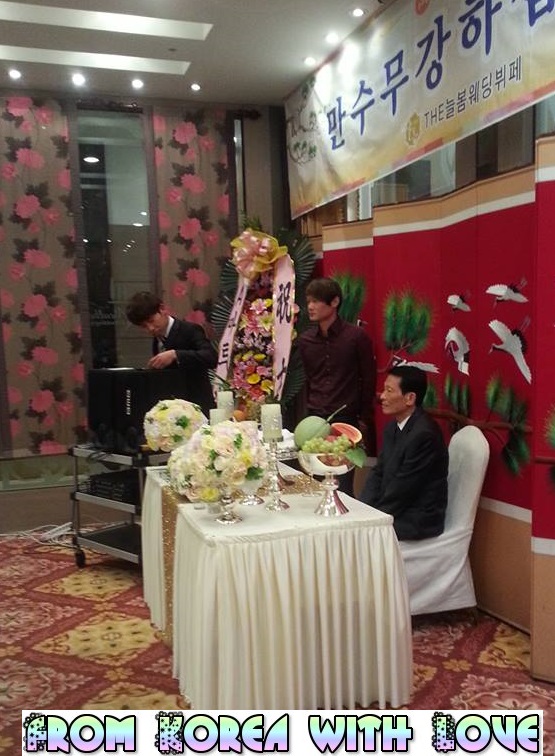Last Sunday, my husband’s third uncle celebrated his 70th birthday known as 고희 (gohui) or 칠순 (chilsun) in Korea. Korean seniors have three special birthdays to celebrate: 환갑 (hwanggap or the 60th birthday), 고희/칠순 (gohui/chilsun or the 70th birthday) and 팔순 (palsun or the 80th birthday). Traditionally, the 60th birthday was the one celebrated lavishly, since in the olden days, few people lived to be 60, but now that the average life expectancy in Korea has risen due to medical advancement and better quality of life, some Koreans don’t celebrate the 60th birthday anymore. Instead, the celebration is done on their 70th (or 80th) birthday.
When my 시아버지 (father-in-law) turned 60, we prepared a simple get-together in the house. There was no ceremony, just dinner and drinking. He wanted to go on a trip abroad with the family, but my sister-in-law just gave birth to her second child, so the plan didn’t push through. We will probably have the trip on his 70th birthday.
While most Koreans have a big party in a banquet hall wherein many guests are invited, some just want to spend time with their family by traveling overseas with them.
Normally, 60th, 70th and 80th birthday festivities follow ceremonial activities. Family members, as well as the birthday celebrator, wear hanbok on these occasions. The celebrator is called to sit at the bountiful banquet table where piles of ceremonial food are beautifully arranged. These food include beef, pork, chicken, fish, fresh fruit, rice cake and traditional pastries that are heaped together in 30 to 60 centimeter-tall round stacks, and are placed in two to three colorful rows. The ceremonial food at the party we attended on Sunday wasn’t this elaborate, but there were fruit, rice cake, traditional cookies and a big cake on the banquet table that looked like a wedding cake. Cake was not served on 칠순 in the olden days, but today, it is a common birthday gift here in Korea. Wine was the most usual gift back then. The eldest son would bring wine for the ceremony, and he was the first one to present his parent with the wine and ceremonial meals. The celebrator’s children would all bow to him and offer him wine or other presents.
On my husband’s uncle’s 7oth birthday, it was the eldest son who was called to initiate the ceremony. There was no giving of wine, but the first son bowed to his father and gave him a message. The other siblings were not asked to bowand deliver a message, but they joined the guests in the toast. No one wore hanbok that day. I guess it wasn’t a verytraditional ceremony.
In another 칠순 party my husband and I went to, the children and the grandchildren of the celebrator wore the same color of hanbok. They bowed to the celebrator at the same time, and all the children gave their father short messages and offered him songs. There was a time when guests recited poems for the celebrator, but these days, performers are hired to entertain guests with traditional music, or sometimes the celebrator’s children prepare song and dance numbers. A long time ago, the celebrator’s children would dress as infants or kids to make their parent feel younger, but my husband told me that nobody is doing that now. Thank goodness, I can’t imagine my husband wearing a diaper or carrying a pacifier on his parents’ milestone birthdays! =)





Recent comments